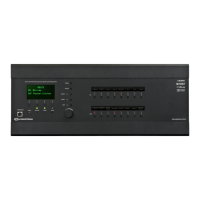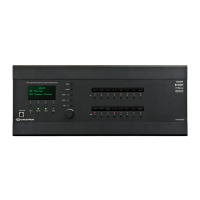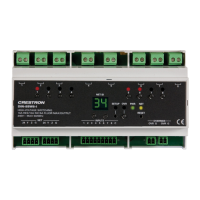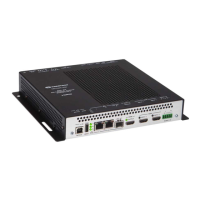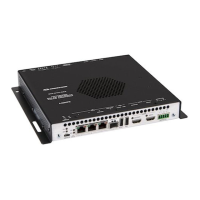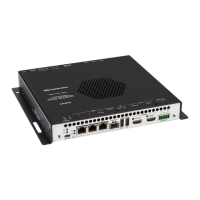Design Guide – DOC. 7977F DM NVX System • 35
Glossary
802.1P: A network quality of service labeling protocol that assigns a number from zero to
seven to determine network traffic priority; defined in IEEE 802.1P-1998
802.1Q: A network protocol that allows for VLANs and tagging of VLAN traffic and
enables 802.1P to provide quality of service features; defined in IEEE 802.1Q-2014
802.1X: A network control protocol to authenticate devices connected to an Ethernet
network on a port-by-port basis by encapsulating the Extensible Authentication
Protocol; defined in IEEE 802.1X-2010
Active Directory: An application protocol developed for Microsoft® Windows® networks
that authenticates and authorizes users and devices using login mechanisms and also
stores and controls additional information on the network regarding users and resources
Core: The central point of a network from which all network devices and intermediate
infrastructure are normally accessible
Closet: The distribution point for networking infrastructure localized to a floor or group
of rooms
Dynamic Host Configuration Protocol (DHCP): A network protocol that distributes
network parameters such as IP addresses through a server to clients requesting them;
defined in IETF RFC 2131
Domain Name System (DNS): A system of naming computers on a network that have
numerical IP addresses; defined across multiple IETF RFCs starting with IETF RFC 1034
Domain Controller: A server-running domain service such as AD or LDAP
Extensible Authentication Protocol (EAP): A protocol for authentication of point-to-
point network connections using multiple methods including TLS and MS-CHAP v2;
defined in IETF RFC 3748 and IETF RFC 5247
Edge: The endpoint of a network connection that allows end device interconnection with
the network
Extended Display Identification Data (EDID): A data structure usually communicated
over HDMI and DVI interfaces between audio/video sources and displays to identify the
capabilities of the devices on the link; defined in VESA EDID Version 3 and EIA/CEA-861
Intermediate Distribution Frame (IDF): The signal distribution frame that allows
interconnection between the main distribution frame and premises closets
International Electrotechnical Commission (IEC): A nonprofit organization that
publishes standards regarding electrical and electronic standards
Institute for Electrical and Electronics Engineers (IEEE): A nonprofit organization that
publishes electrical and electronics standards particularly for network communication
through the IEEE 802 family of standards
Internet Engineering Task Force (IETF): A standards organization that establishes and
maintains voluntary standards for Internet networking globally

